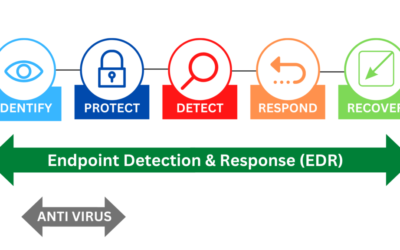AI is transforming the business world, creating new opportunities for efficiency, productivity, and growth. With global adoption rates now at 35% (up from 25% in 2019, according to McKinsey), the importance of AI in business is clearer than ever. Whether you’re exploring AI for the first time or looking to refine your understanding, this guide will walk you through the basics, introduce key AI types, and offer insights into the transformative potential AI can bring to your business.
1. What is AI? – A Quick Overview
Artificial Intelligence (AI) is a broad field of computer science that aims to create systems capable of performing tasks that typically require human intelligence. These tasks include recognizing speech, learning from data, making decisions, and even generating creative content. As businesses embrace digital transformation, AI is often at the forefront of their strategies, helping automate tasks, improve decision-making, and even enhance customer interactions.
In recent years, companies of all sizes have seen that integrating AI can lead to considerable cost savings and more effective use of resources. But what exactly makes AI so powerful, and how can it fit into a business strategy?
2. Key AI Terms Every Business Owner Should Know
Before diving into how AI can help, it’s helpful to understand a few key terms that are often used in discussions about AI:
- Machine Learning (ML): A type of AI that enables systems to learn from data and improve over time without explicit programming. Examples include recommendation engines (like Netflix’s suggestions) and predictive analytics.
- Natural Language Processing (NLP): AI that allows computers to understand, interpret, and respond to human language. Chatbots and virtual assistants like Siri and Alexa use NLP to communicate with users naturally.
- Deep Learning: A subset of ML that uses neural networks with multiple layers (hence “deep”) to analyze complex data patterns. This technique is used in advanced applications like image and speech recognition.
- Computer Vision: The use of AI to interpret and understand visual information from the world. From facial recognition to quality control in manufacturing, computer vision is expanding rapidly.
- Robotic Process Automation (RPA): RPA uses AI and software to automate repetitive tasks, such as data entry or processing transactions. Unlike traditional automation, RPA can adapt to different tasks and respond to changes in data or environment.
Understanding these terms can make it easier to see where AI technologies can address specific business needs and improve operations.
3. Types of AI: A Breakdown of AI Technologies
AI encompasses several technologies and approaches, each with unique strengths. Here are the main types to know about:
- Machine Learning (ML): ML algorithms use data to train systems to make predictions or identify patterns, helping businesses forecast demand, detect fraud, or tailor customer experiences. For example, an e-commerce company might use ML to analyze purchasing habits and suggest products to customers.
- Natural Language Processing (NLP): NLP can improve customer service experiences by interpreting and responding to customer inquiries in real time. For instance, a customer service chatbot using NLP can answer questions, resolve complaints, and guide users through common procedures, 24/7.
- Deep Learning: With deep learning, companies can analyze highly complex data patterns to improve image recognition, speech recognition, and more. An automotive manufacturer might use deep learning to develop self-driving car systems that interpret the environment around the vehicle.
- Computer Vision: Useful for tasks like quality inspection, facial recognition, and augmented reality applications, computer vision allows AI to analyze visual inputs. Retail stores, for example, might use computer vision to track customer movements and improve store layout for an optimized shopping experience.
- Robotic Process Automation (RPA): By automating repetitive tasks, RPA allows employees to focus on higher-level work, reducing costs and minimizing errors. An insurance company might use RPA to process claims, ensuring quicker, more accurate outcomes for customers.
Understanding these AI types can help business owners determine which AI solutions align with their goals, such as enhancing customer experience, streamlining operations, or gaining competitive insights.
4. How AI is Transforming the Business Landscape
AI’s impact on the business landscape is profound and far-reaching, especially as adoption rates continue to rise. According to McKinsey’s 2022 report, global AI adoption rates have reached 35%, up from 25% in 2019. This increase reflects businesses’ recognition of AI’s potential in several key areas:
- Improved Efficiency: AI-driven automation helps streamline tasks, reduce repetitive work, and improve accuracy in processes ranging from customer service to HR management.
- Enhanced Customer Experiences: Personalized recommendations, faster response times, and proactive customer engagement—all made possible with AI—can significantly enhance how customers perceive a brand.
- Data-Driven Decision Making: With the help of AI, businesses can analyze vast amounts of data and gain insights that would be difficult to spot otherwise. Whether forecasting sales or identifying operational inefficiencies, AI turns raw data into actionable insights.
- New Product and Service Opportunities: As AI continues to evolve, it opens up avenues for new product offerings and business models, from AI-driven analytics tools to subscription-based services that enhance customer lifetime value.
5. The Benefits of AI for Businesses
Increased Productivity: By taking over repetitive tasks, AI allows employees to focus on more strategic, high-value activities.
Scalability: AI systems can scale processes without significantly increasing costs, helping businesses grow rapidly in response to demand.
Cost Savings: Automation and predictive analytics reduce operational costs by streamlining workflows and optimizing resource use.
Competitive Advantage: Early adopters of AI gain a competitive edge, offering innovative solutions that set them apart from competitors.
Better Customer Insights: AI tools can analyze customer data to create personalized experiences, increasing customer loyalty and retention.
With these benefits in mind, it’s easy to see why so many businesses are prioritizing AI investments to stay ahead in an increasingly competitive landscape.
6. Getting Started: Book a Discovery Call with Our Team
AI’s potential to revolutionize business operations, customer engagement, and strategic planning is clear. Whether you’re just getting started with AI or looking to integrate more advanced solutions, our team is here to guide you through every step. We’ll work with you to identify your goals, select the right AI tools, and implement strategies that drive real results.
📞 Ready to take the next step? Book a discovery call with us today and explore how AI can help your business achieve new heights of success!
Final Thoughts
As more businesses embrace AI, it’s becoming increasingly critical to understand its applications and benefits. From machine learning to natural language processing, AI offers tools that can improve efficiency, enhance customer experiences, and drive strategic growth. Don’t get left behind—start exploring AI today to see how it can transform your business.




